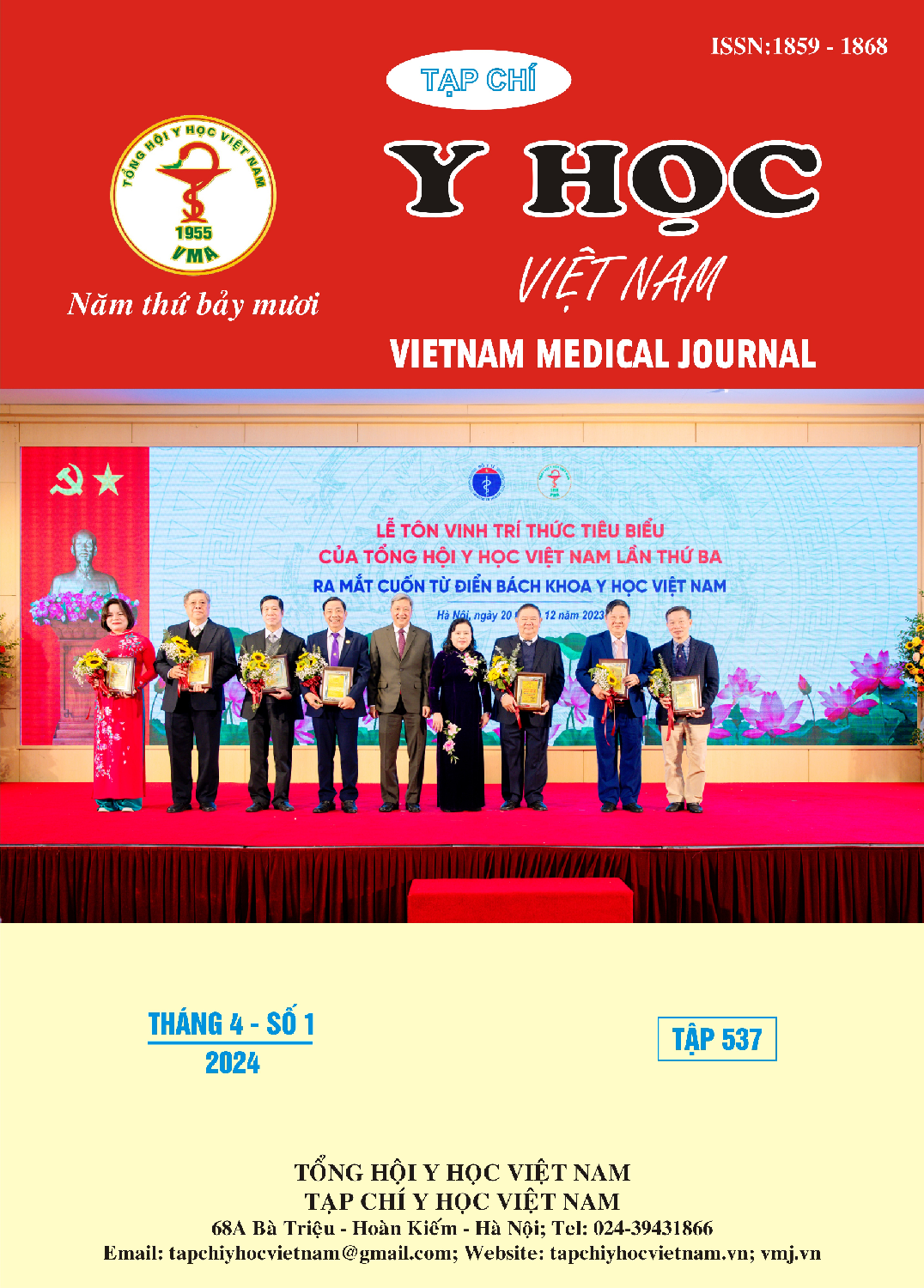LONG - TERM OUTCOMES OF ANATOMIC LIVER AND BILIARY LESION RESECTION COMBINED WITH CHOLANGIOSCOPY FOR INTRAHEPATIC STONES
Main Article Content
Abstract
Background: Hepatolithiasis is common in East Asia. Hepatectomy is considered actually as the best method with high stone clearance and low stone recurrence rate. Objectives: To evaluate the long-term results and to propose the indications of this surgical method. Method: Noncontrolled longitudinal interventional study. Results: From 2/2011 to 2/2021, 134 hepatectomies were performed by laparoscopic (33 cases) and open surgery (101 cases). The mean age was 47.14 (23 -77), 72,38% was female. Hepatolithiasis appeared in the left lobe 61,94%, right lobe: 13,43% and bilateral: 21,6%. 72,38% had bile duct strictures with 57,22% on the left side, 11.19% on the right side and 3,73% bilateral and 2.23% at the hilum. We realized 88 left hepatectomies, 15 right hepatectomies, 8 left lobectomies, 2 anterior sectionectomies, 3 posterior sectionectomies, 14 segmentectomies, and 4 bilateral hepatectomies. The immediate postoperative stone clearance rate was 82,83% (Retained stones occurred mostly in bilateral hepatolithiasis). The final stone clearance rate was 98%. The overall complications were 28.6% including: bile leakage 2.4%, liver failure 1.6% and 2 deaths. With a mean follow-up of 65,05 months, recurrent stones developed in 6,74% (6/89 patients) exclusively for bilateral hepatolithiasis. Conclusion: Anatomic liver and biliary lesion resection for intrahepatic stones is an effective treatment for hepatolithiasis, with a high stone clearance and a low stone recurrence rate. Indication of hepatectomy should be carefully considered for high recurrence risk regional hepatolithiasis or for intrahepatic stones associated with liver atrophy or bile-duct lesions.
Article Details
Keywords
Intrahepatic stone, hepatectomy.
References
2. Cheung MT1, Kwok PC (2005). Liver resection for intrahepatic stones. Arch Surg; 140(10): 993-7.
3. Dong J1, Lau WY, Lu W, Zhang W, Wang J, Ji W. Caudate lobe-sparing subtotal hepatectomy for primary hepatolithiasis. Br J Surg. 2012 Oct; 99(10):1423-8. doi: 10.1002/bjs.8888.
4. Đoàn Văn Trân, 2019. Vai trò của nội soi đường mật trong cắt gan điều trị sỏi. Tạp Chí Y Học Lâm Sàng-Bệnh viện Trung Ương Huế, Số 53/2019: 84-91.
5. Đỗ Tuấn Anh, (2008). Đánh giá kết quả ứng dụng kỹ thuật cắt gan theo phương pháp Tôn Thất Tùng trong điều trị bệnh sỏi trong gan. Luận án tiến sĩ. Học viện Quân Y.
6. Hui H, Hong Wu, Ying-Long Xu et al. (2010). An Appraisal of Anatomical and Limited hepatectomy for Regional Hepatolithiasis. HBP. Surg: 7916-25.
7. Jarufe N (2012). Anatomic hepatectomy as a definitive treatment for hepatolithiasis a cohort study.
8. Jiahong Dong, Xiaobin Feng, Shuguo Zheng, Feng Xia, Kuansheng Ma (2012). Classification and management of hepatolithiasis: A high-volume, single-center's experience. intractable Rare Dis Res; 1(4): 151-156.
9. Takasaki Ken (2007). Glissonean Pedicle Transection Method for Hepatic Resection. Springer: 1-100.
10. Lee S.K., Seo D.W., Myung S.J. et al. (2001). Percutaneous transhepatic cholangioscopic treatment for hepatolithiasis: an evaluation of long-term results and risk factors for recurrence. Gastrointest Endosc; 53(3): 318-23.
11. Lee TY1, Chen YL, Chang HC, Chan CP, Kuo SJ. (2007). Outcomes of hepatectomy for hepatolithiasis. World J Surg; 31(3): 479-82.


